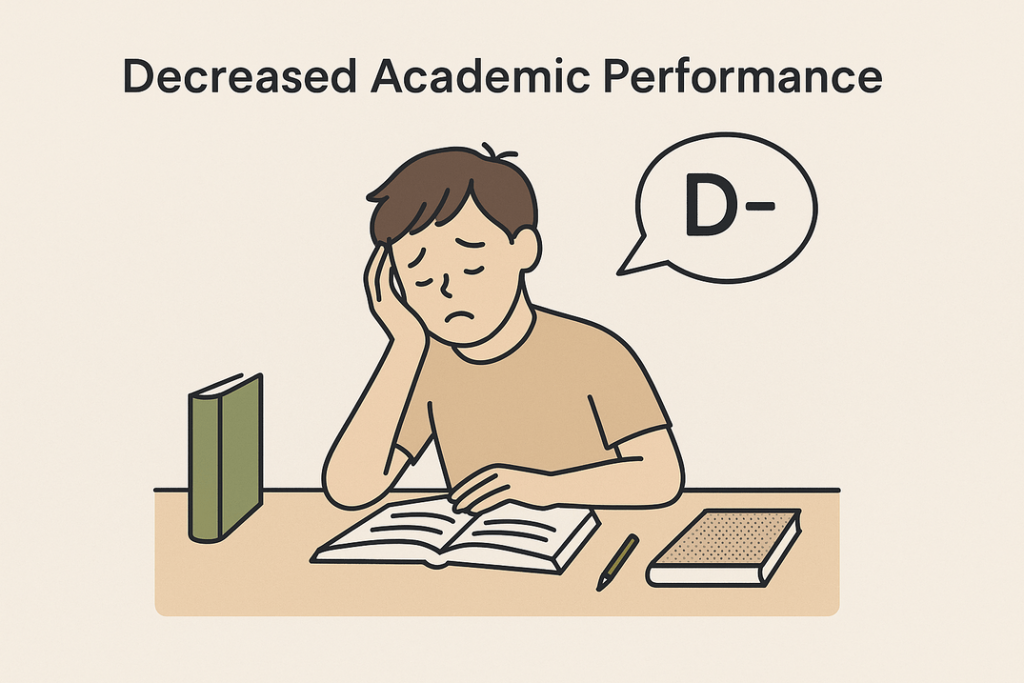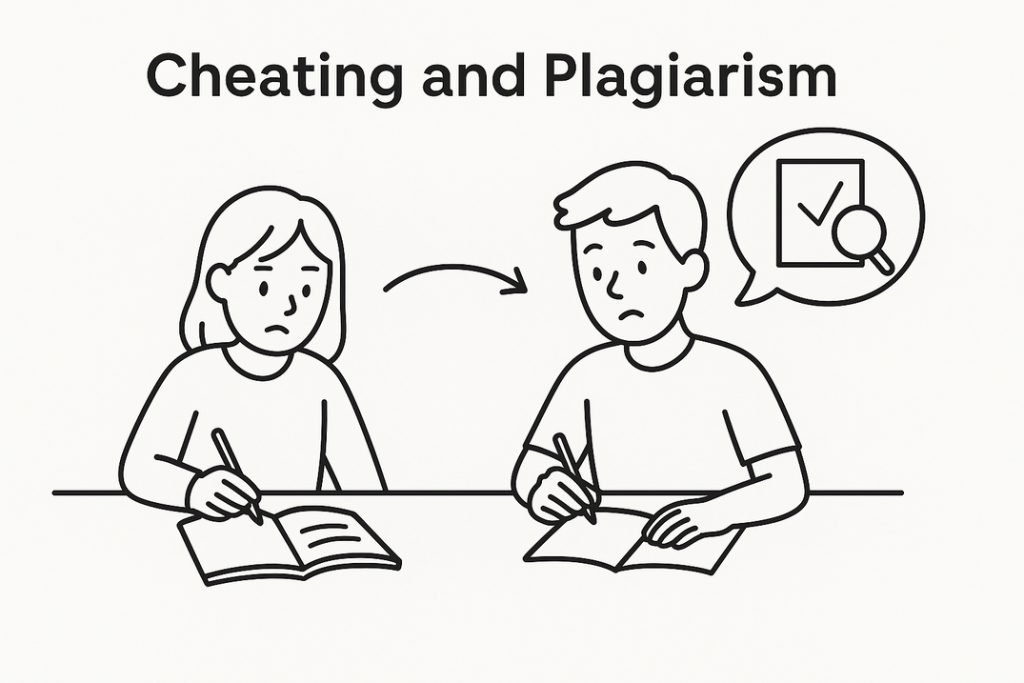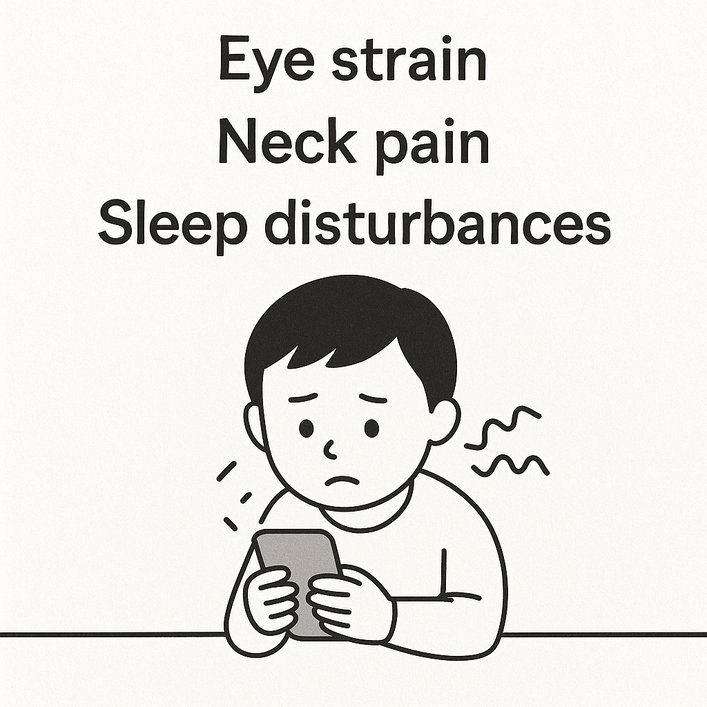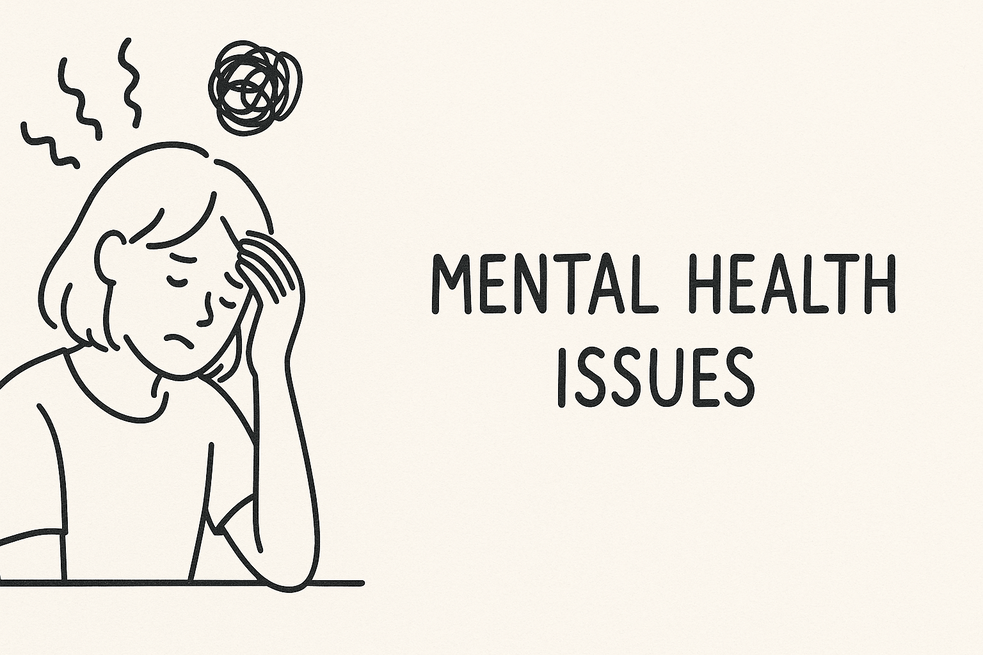Mobile phones are everywhere—from our pockets to our classrooms. While smartphones offer countless benefits, especially in education and connectivity, they also come with serious risks when used unwisely—especially for students.
In this blog, we’ll explore harmful effects of Mobile Phones. How mobile phones affect students, the advantages and disadvantages, real-life studies, and tips for healthy usage.
Disadvantages & Harmful Effects of Mobile Phones for Students
1. Distraction from Studies

Phones are full of distractions like notifications from social media, games, or messages from friends. When students check their phones during class, they miss what the teacher is saying. This makes it hard to understand lessons and do well on tests. For example, a quick glance at a funny video can turn into 10 minutes of scrolling, leaving students confused about the topic being taught.
- Example: A 2023 study by the University of Chicago found students who had phones on their desks—even when turned off—scored 20% lower on memory tests than those without phones nearby, so its prove Harmful Effects of Mobile
2. Decreased Academic Performance

Spending hours on Instagram, Snapchat, Telegram, Twitter, Facebook, WhatsApp, YouTube, or gaming apps means less time for homework or revising lessons. Many students get so caught up in their phones that they put off studying until it’s too late. This can lead to poor grades and stress before exams. For instance, instead of reviewing math formulas, a student might spend hours chatting or watching reels. This can result in:
- Lower grades
- Missed deadlines
- Cramming before exams with poor retention
3. Cheating and Plagiarism

This is one of new trend within Harmful Effects of Mobile. Phones make it tempting to cheat. Students can quickly Google answers during tests or copy content for assignments without doing the work themselves. This not only affects their learning but can also get them into trouble with teachers. Over time, relying on cheating stops students from developing real skills.
4. Health Hazards

Excessive phone usage leads to:
- Eye strain (dryness, blurry vision)
Looking at a phone screen for hours can strain the eyes, causing dryness, blurry vision, or headaches. This is sometimes called “digital eye strain.” For example, students who watch videos or play games late at night might notice their eyes feel tired or sore the next day. Over time, this could lead to bigger vision problems. - Neck/back pain (“text neck”)
Holding a phone and looking down for long periods can cause neck, shoulder, and back pain. This is often called “text neck” because the head is bent forward for too long. For instance, students hunched over their phones while texting or gaming might feel stiff or sore afterward. If this happens a lot, it could lead to long-term posture issues. - Sleep disorders due to blue light exposure
The blue light from phone screens can mess with the body’s sleep cycle. When students use phones before bed, it’s harder for them to fall asleep because the light tricks their brain into thinking it’s still daytime. Poor sleep makes students tired, grumpy, and unable to focus in class. For example, staying up late scrolling through Instagram can leave a student too tired to pay attention in school. - Hearing loss from prolonged earphone use
Many students listen to music or videos through earphones at high volumes. Over time, this can harm their hearing, causing problems like ringing in the ears or difficulty hearing soft sounds. - Radiation Exposure: Mobile phones give off radiofrequency (RF) radiation, and using them a lot could possibly increase the risk of health issues like brain cancer. Some studies have shown a possible link, but nothing is confirmed yet. Even the World Health Organization (WHO) says RF radiation is “possibly carcinogenic to humans,” meaning there’s a chance it could cause cancer.
What’s more concerning is that the government gives telecom companies permission to operate within safe RF frequency limits to protect public health. But in some cases, companies have reportedly pushed beyond these limits to expand network coverage — often without the government’s full knowledge or proper oversight.
To put it in perspective:
- Safe RF frequency limits (as per global standards like ICNIRP): 900 MHz to 1800 MHz for mobile phones, with strict exposure limits.
- Government-approved power density (in India): Max 0.45 W/m² for 900 MHz.
- What some telecom towers emit: In some areas, power density levels have gone beyond these norms, especially near densely populated zones.
- So even though mobile technology has advanced, unchecked increases in frequency or signal strength could raise long-term health risks — especially if we’re constantly exposed to it.
5. Mental Health Issues

- Phone addiction: Fear of missing out (FOMO) can cause anxiety.
One of biggest problem of today’s topic ‘Harmful Effects of Mobile’. Some students feel like they need their phone all the time. They might check it every few minutes or feel anxious if it’s not nearby. This addiction can make it hard to focus on anything else, like schoolwork or family time. For example, a student might feel stressed if they can’t check their phone during a class or family dinner. - Social media pressure: Constant comparison lowers self-esteem.
Social media apps like Instagram or Snapchat show perfect-looking lives, which can make students feel bad about themselves. They might compare their looks, clothes, or life to others and feel like they’re not good enough. This can lead to low confidence, anxiety, or even depression. For instance, seeing friends post about parties or new gadgets can make a student feel left out or unworthy. - Cyberbullying: 1 in 5 students has experienced bullying through mobile phones.
Phones make it easy for bullies to send mean messages, spread rumors, or share embarrassing photos online. Victims of cyberbullying can feel scared, sad, or alone, which hurts their mental health. For example, a cruel comment on a student’s post can make them dread going to school or using their phone.
6. Weakened Real-Life Communication
Students prefer texting over talking, which stunts verbal communication and emotional intelligence. Face-to-face skills suffer.
Phones can affect how students interact with others in real life:
(a) Less Real-Life Communication
When students spend more time texting or chatting online, they get less practice talking face-to-face. This can make it harder to build strong friendships or handle conversations in person. For example, a student who texts all the time might feel shy or awkward when talking to someone at school.
(b) Feeling Alone
Spending too much time on phones can make students feel isolated. Instead of hanging out with friends or family, they might stay glued to their screens. Over time, this can make it harder to form close relationships. For instance, a student who plays games alone every evening might miss out on bonding with siblings or friends.
(c) Misunderstandings Online
Text messages or online chats don’t show tone of voice or facial expressions, which can lead to misunderstandings. Students might argue with friends over a misinterpreted message, damaging their relationships.
7. Exposure to Inappropriate Content
Phones can expose students to things that aren’t good for them:
(a) Harmful or Inappropriate Content
Without supervision, students might come across videos, images, or websites with violence, adult content, or false information. This can scare them, confuse them, or influence their behavior in negative ways. For example, a student might stumble upon a violent video that makes them feel upset or act aggressively.
(b) Online Scams and Privacy Dangers
Students might not know how to protect their personal information online. They could share private details like their address or photos with strangers, putting them at risk of scams, identity theft, or even dangerous situations. For instance, clicking on a fake ad could trick a student into giving away their password.
(c) Exposure to Fake News
Phones make it easy to see misinformation, like fake news or misleading posts. Students might believe these things, which can shape their views in wrong or harmful ways.
8. Financial Pressure
Phones can create money-related issues for students and their families:
(a) Pressure to Buy Expensive Phones
Students often want the latest, coolest phones to fit in with their friends. This can put a lot of pressure on families who may not have the money to buy expensive devices. For example, a student might feel embarrassed if they have an older phone while their classmates show off new ones.
(b) Spending Money in Apps or Games
Many apps and games push students to spend money on things like extra lives, skins, or special features. This can lead to big bills if students aren’t careful. For instance, a student might spend $50 on a game without realizing how quickly it adds up.
(c) Data Costs
Using phones for videos, games, or social media uses a lot of data. If students go over their data plan, it can lead to extra charges for their parents.
Read more about Memorize Your Book Faster and Better
What Happens When You Quit Social Media? Stanford Study Has the Answer
A recent large-scale study by Stanford University and New York University, reported by The Indian Express, sheds new light on the impact of mobile-based social media use. In this study, over 35,000 users were paid to deactivate Facebook and Instagram for six weeks. The results were eye-opening—participants reported improved mental well-being, reduced anxiety, and a noticeable decline in political polarization. Interestingly, even after the experiment ended, users continued to spend less time on these platforms, indicating a lasting behavioral shift. This reinforces growing concerns about the harmful psychological and social effects of excessive mobile and social media usage.
Advantages of Mobile Phones for Students
It’s not all bad—when used wisely, mobile phones can enhance learning and safety.
1. Access to Educational Content
Apps like BYJU’S, Unacademy, or Khan Academy offer free learning on the go.
2. Emergency Contact
Students can instantly reach parents, school authorities, or medical help.
3. Organizational Tools
Calendar apps, reminders, and note-taking tools help students manage time better.
4. Skill Development
Through apps, students learn coding, digital art, typing, and other modern skills.
5. Remote Learning
Post-pandemic, mobile learning became essential for attending online classes and exams.
6. Do More Offline Activities
Encourage students to play sports, read books, draw, or hang out with friends in person. These activities help them stay active, creative, and connected without screens. For example, joining a soccer team can be more fun than playing a game on a phone.
🧠 Real-Life Example
In 2024, Delhi Public School implemented a “no-phone in classrooms” policy. Results showed a 27% improvement in student focus and a 15% rise in average scores.
Real Talk: “Every Home Will Have a Mentally Disturbed Person in 20 Years” – Savji Dholakia
In a powerful address, Indian businessman Savji Dholakia warned:
“If we don’t control mobile phone usage today, every household will have at least one mentally disturbed person in the next 20 years.”
Speaking at a school function, he highlighted how children are unknowingly absorbing harmful behavior patterns through excessive phone use. He pointed out that:
- Kids are picking up laziness from fathers
- Learning abusive language from mothers
- And are constantly distracted by screens instead of engaging with real life
Dholakia made it clear—this isn’t about blaming parents, but about taking action. He urged families to limit phone usage, spend real time with their children, and reclaim control over their daily habits.
He added:
“The world is changing. If we don’t change how we live and think, mobile phones will damage our minds and homes. Don’t let technology replace real human connection.”
⚠️ Indian Parents Are Being Warned About Screen Addiction
Health experts are now warning Indian parents that children are spending over 2.5 hours daily on phones, TVs, and computers. According to a report by WION News, this high screen time is harming kids’ mental health—affecting their sleep, focus, and behavior.
Doctors say too much screen use can make children anxious, restless, and emotionally disconnected. They urge parents to take action early by setting screen time limits and encouraging more real-life play, family time, and face-to-face interactions.
🔄 Balancing the Use: Tips for Healthy Phone Use
For Students:
- Use apps like Forest, Study Bunny, or Google Digital Wellbeing to track screen time.
- Avoid phones 1 hour before sleep.
- Designate “phone-free” study times.
- Use blue-light filters and sit with good posture.
- Use keypad mobile phones for students if possible
For Parents:
- Set screen time boundaries.
- Keep phones out of bedrooms at night.
- Discuss cyberbullying, privacy, and emotional impact.
- Encourage outdoor or group activities.
For Teachers:
- Conduct awareness sessions.
- Ban phones during lectures.
- Promote offline problem-solving and team tasks.
Pros and Cons in Summary
👍 Advantages
- Easy access to learning content
- Immediate communication
- Organizational tools for better productivity
- Online courses and self-study
- Helps in emergencies
👎 Disadvantages
- Distraction and lower academic scores
- Eye, back, and sleep issues
- Anxiety, FOMO, addiction
- Risk of online bullying or scams
- Reduced real-world communication skills
You can suggest your kids about Coding for Students
🔗External Resources
🎯 Final Thoughts
Mobile phones are tools—not toys. Used wisely, they open doors to knowledge and communication. But misuse can lead to distraction, health problems, and emotional distress (Harmful Effects of Mobile)
By promoting balance, setting healthy rules, and encouraging digital literacy, we can empower students to thrive both online and offline.
Can mobile phones cause physical health problems in students?
Yes, prolonged mobile phone use can contribute to several physical health problems in students. These include eye strain and digital eye fatigue, headaches, neck and shoulder pain (“tech neck”), poor posture, and disrupted sleep patterns due to the blue light emitted from screens.
How does constant mobile phone use affect a student’s sleep quality?
Constant mobile phone use, especially before bedtime, severely impacts a student’s sleep quality. The blue light emitted from screens suppresses melatonin production, making it harder to fall asleep. Notifications and the urge to check the phone also lead to fragmented and insufficient sleep.
What are some engaging alternative activities students can do instead of being on their phones?
Students can engage in a variety of enriching alternatives such as reading physical books, playing outdoor sports, pursuing creative hobbies like drawing or playing music, spending time with family and friends in person, volunteering, learning a new skill, or exploring nature.
What are the benefits of a “digital detox” for students, and how can they start one?
A digital detox allows students to reset their relationship with technology, improving focus, reducing stress, enhancing sleep, and fostering real-world connections. Students can start by committing to a period of time (e.g., a few hours, a day, or a weekend) without their phone, communicating this to friends and family, and planning alternative activities in advance.
How important is it for parents to model responsible mobile phone use for their children?
It is extremely important. Children often mimic their parents’ behaviors. When parents demonstrate healthy phone habits – putting their phones away during family time, not constantly checking notifications, and engaging in offline activities – they provide a powerful positive example for their children.
